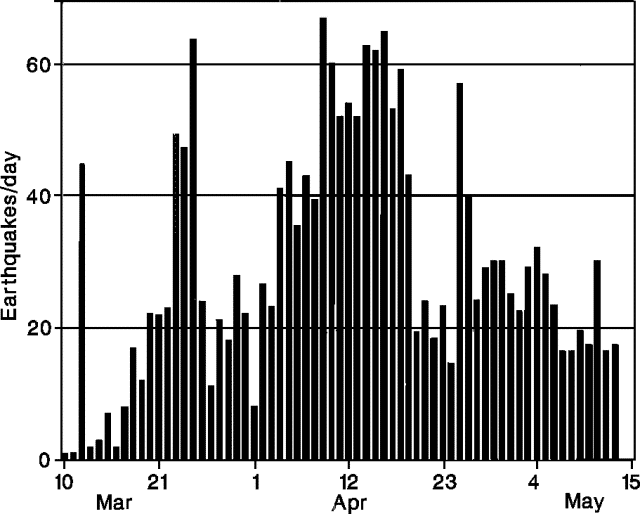Report on Taal (Philippines) — March 1991
Bulletin of the Global Volcanism Network, vol. 16, no. 3 (March 1991)
Managing Editor: Lindsay McClelland.
Taal (Philippines) Increased shallow seismicity and felt earthquakes; more than 1,000 evacuated
Please cite this report as:
Global Volcanism Program, 1991. Report on Taal (Philippines) (McClelland, L., ed.). Bulletin of the Global Volcanism Network, 16:3. Smithsonian Institution. https://doi.org/10.5479/si.GVP.BGVN199103-273070
Taal
Philippines
14.0106°N, 120.9975°E; summit elev. 311 m
All times are local (unless otherwise noted)
Seismologists and area residents noticed a significant increase in seismicity beginning on 12 March (figure 4). High-frequency earthquakes were recorded each day (to 64 on 25 March), of which several/day were felt (intensities to IV). Seismicity was centered under the E side of Volcano Island, at depths of 2-5 km.
Monitoring of the volcano's main crater lake (1.0 x 1.4 km) revealed that the acidity of the lake water has fluctuated considerably, between pH 2.3 and 3.8. Possible slight increases in water temperature (stable at 30°C in mid-April), a change in water color (from light yellowish-green to dark green), and more vigorous bubbling were also noted.
On 1 April, President Aquino ordered the evacuation of the roughly 4,000 people who live on Volcano Island, and more than 1,000 residents (mostly women and children) had left by the following day. Seismicity remained at elevated levels, and the island was partially evacuated as of mid-April.
Geological Summary. Taal is one of the most active volcanoes in the Philippines and has produced some powerful eruptions. The 15 x 20 km Talisay (Taal) caldera is largely filled by Lake Taal, whose 267 km2 surface lies only 3 m above sea level. The maximum depth of the lake is 160 m, with several submerged eruptive centers. The 5-km-wide Volcano Island in north-central Lake Taal is the location of all observed eruptions. The island is composed of coalescing small stratovolcanoes, tuff rings, and scoria cones. Powerful pyroclastic flows and surges have caused many fatalities.
Information Contacts: R. Punongbayan, PHIVOLCS; Chris Newhall, USGS Reston; Manila Bulletin, Manila, Philippines.


